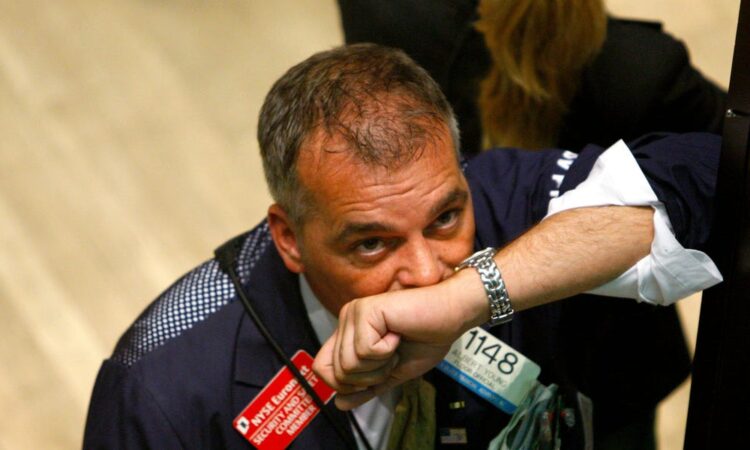
Bill Smead has made a career out of identifying long-term investing trends. The co-manager of the Smead Value Fund (SMVLX) has beaten 98% of similar funds over the last 15 years, returning investors 15% per year on average since July 2009, according to Morningstar.
That’s why Smead’s latest note to investors might be a tough pill to swallow.
Smead doesn’t like the long-term outlook for big stock-market indexes like the S&P 500 and Nasdaq 100. Despite their recent resilience and rallies to new highs, he said he sees a few red flags that could lead to poor performance for the broader market ahead.
The first is that short interest in the S&P 500 and Nasdaq 100 — shares that investors have borrowed in the expectation that they’ll decline — is extremely low. This signals that investor bullishness may be too high. Investor sentiment has historically acted as a contrarian indicator of future performance. Bank of America’s Bull/Bear indicator, for example, issues a buy signal when sentiment is poor and a sell signal when sentiment is bullish.
Smead Capital Management
Second, household equity allocation is hovering around record highs, with 42% of household assets sitting in stocks. This is another indication that sentiment is uber-bullish. Allocations to stocks were only this high during the early part of the pandemic recovery and near the height of the dot-com bubble leading up to 2000.
Smead Capital Management
Current equity allocation levels also show that the S&P 500 could be set to deliver negative returns over the next 10 years.
“High levels of ownership have been a precursor of poor index performance,” Smead said in the note.
Relatedly, recent Bank of America data showed that allocations to cash among fund managers are at some of their lowest levels in history, another signal that investors are confident that they can find better returns elsewhere. This is even more striking considering the robust, risk-free returns that cash offers.
Smead Capital Management
“We are contrarians and oddly crave the moments when history, psychology and mathematics get defied in the U.S. stock market,” Smead said. “We believe this is one of those points in time.”
While most of Wall Street remains bullish in the near term, Smead isn’t alone in his cynicism about the market’s ability to continue to deliver robust returns over the long term.
Research Affiliates founder Rob Arnott says there are plenty of sub-sectors and markets worldwide that offer better return outlooks than indexes like the S&P 500 — including international value stocks, REITs, small-caps, and non-US developed market stocks.
“I’ve been called a permabear. I’m not. I’m a bull on things that are cheap,” Arnott told Business Insider in May. “I’m not a bear when it comes to things that are priced to give you double-digit returns, and there’s a lot of them right now.”
Jeremy Grantham, the cofounder of GMO, has warned of spectacular downside ahead for the S&P 500 given how high valuations have climbed and has said he likes the quality and deep value factors.
For Smead, the best returns lie in oil and homebuilder stocks, both of which trade at a “50% discount,” he said.
For oil stocks, he believes oil prices will stay above $80 a barrel, and that analysts are therefore underestimating earnings. Homebuilder stocks, meanwhile, are suffering from poor investor optimism as interest rates stay elevated.
Investors can gain exposure to these sectors through funds like the Invesco DB Oil Fund (DBO) and the iShares U.S. Home Construction ETF (ITB).


